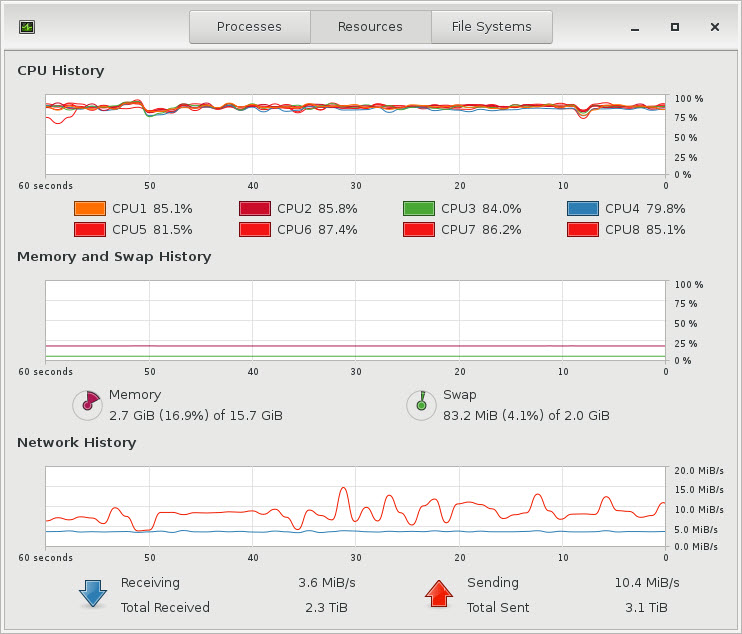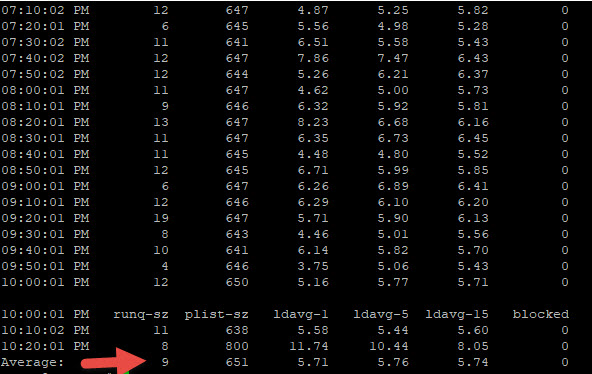So my buddy Rob runs Blue Iris, I don’t think it is a bad product, just that for me, I am a Linux guy and feel more comfortable with Zoneminder running on Linux.
But I do want to share how I monitor my environment with him and if anyone reads my blog.
This is my current zoneminder rig
https://www.apolonio.com/blog/?p=7173
But I have since added and upgraded a few more cameras.
- Currently I have 24 cameras (25 monitors but 1 is a simple jpeg)
- 6 are 1080P cameras
- 1 is a 4MP camera
- Most of the Cameras are set at 10FPS
- Most of the monitors are set at modect
Most cameras are doing motion detection and I think all but 1 of the 1080P cameras are doing motion detection so it gets BUSY
Note that the CPUs are busy (curious that RAM is barely used). This utility, gnome-system-monitor give a pretty real time graph as to how resources are being used on the box.
Sometimes the GUI is not available so you run top
And although you are given a point in time value for load average, this may not give you an idea if you are overloaded or not.
This is an 2 socket 4 core per CPU machine (so 8 total cores), so running at 13, 11, and 9 may indicated an overloaded box.
But running sar -q gives you a history from midnight with an average for the day
Note that the load average for the day is 5.71, 5.76, and 5.74 which is what I usually see with this setup.
For those interested the CPUs Intel(R) Xeon(R) CPU E5606 @ 2.13GH.
If CPU becomes an issue I can upgrade, two 6 core 3GHz CPUs would run me about $50 each.
Another way I can reduce load is to use the secondary channel which is at a lower resolution to do the analytics and trigger the main channel to record.
Or I could use external devices like an X10 network or other 433Mhz devices to trigger the cameras.



